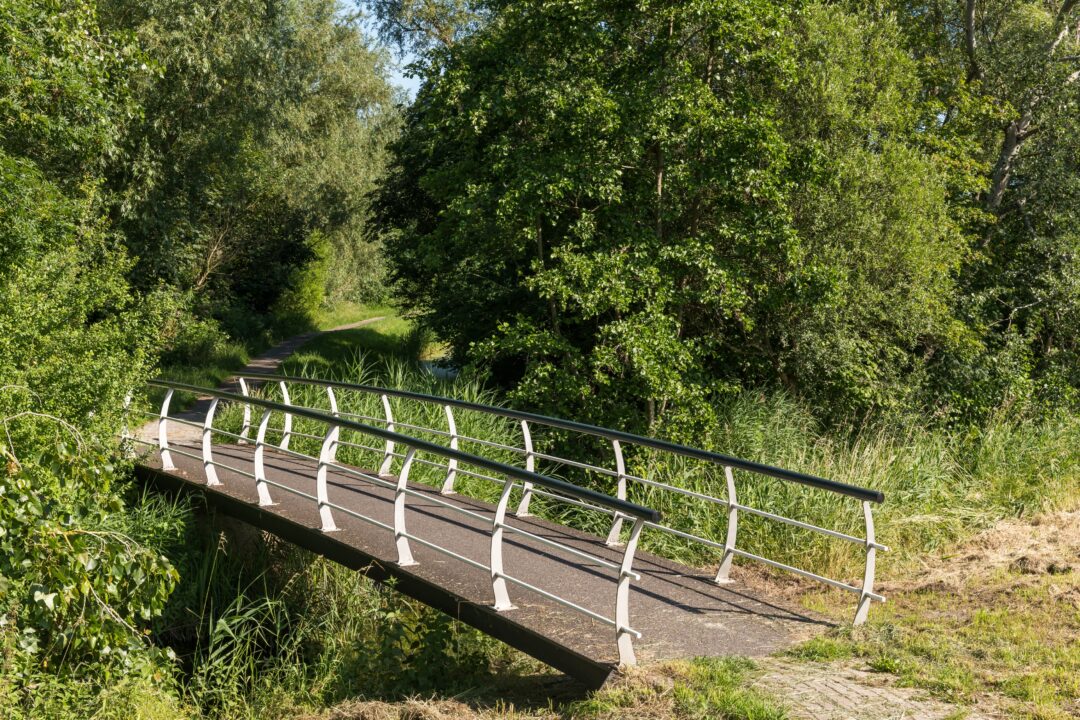The municipality of Purmerend is going to replace dozens of foot and bicycle bridges with ones made of plastic composite. A hit for bridge builder FiberCore, which speaks of a logical choice. "In the long run, composite is more economical," he says. According to the framework contract the North Holland municipality signed last week with FiberCore Europe, eighty bridges are involved. The replacement operation mainly involves wooden bridges for pedestrians, cyclists and service vehicles from the 1970s and 1980s that are at the end of their technical lifespan. "The choice for composite has to do with its enormously long lifespan and simplicity of construction," explains technical manager Rolf van Heeringen of the Purmerend municipality. "Moreover, reuse is simple: you can lift them up and put them elsewhere."
Good experiences
The municipality chose large-scale use of plastic composite because it has had good experience with it. Over the past fifteen years, the Rotterdam bridge builder has already built dozens of composite bank connections in the new residential areas of the water-rich municipality. These bridges require hardly any maintenance. Sporadic damage due to vandalism appears to be easily solvable. Furthermore, placement is easy due to the light weight. Often a stabilized sand bed plus a few concrete slabs suffice as foundations. Piling is only necessary for larger ones and bridges that must be passable for emergency services.
The largest on the program has a span of about forty meters; the smallest is five meters. Widths range from two to five and a half meters. The bridge builder says it can easily handle the largest order in its existence. "There are a lot of them, but we have six molds in our factory," says Matthijs Raak of FiberCore Europe. "On each one we can make an average of one bridge per week. So that's not a problem."
Scale
The company supplies the bridges including steel railings. Once the contractor finishes the abutments, the bridge is lifted ready-made into place - which is normally completed within an hour. Once the pavement has been repaired, the bikes can cross it again.
The process of demolishing and sustainably reusing concrete, as with traditional bridges, is missing. Coupled with the low maintenance costs, according to Van Heeringen, makes plastic cheaper on balance. "Tough that the municipality is now also taking the follow-up step of a large order," Raak believes. According to him, the scale of the order reduces the price because engineering costs go down.
4.5 to 7.5 million
The Rotterdam-based bridge builder will be with the operation in Purmerend for at least two years. If everything goes according to plan, an extension to four years will follow. According to the framework agreement, the volume purchased by the municipality amounts to a minimum of 4.5 and a maximum of 7.5 million euros. The intention is that the first bridge will be delivered in November.
FiberCore has been building bridges and lock gates with InfraCore technology since 2008. This enables industrial production of robust panels of fiberglass composite that are heavy-duty and resistant to delamination. In recent years, recycled PET foam has also been going into the molds, with cutting waste from its own plant also being recycled.


